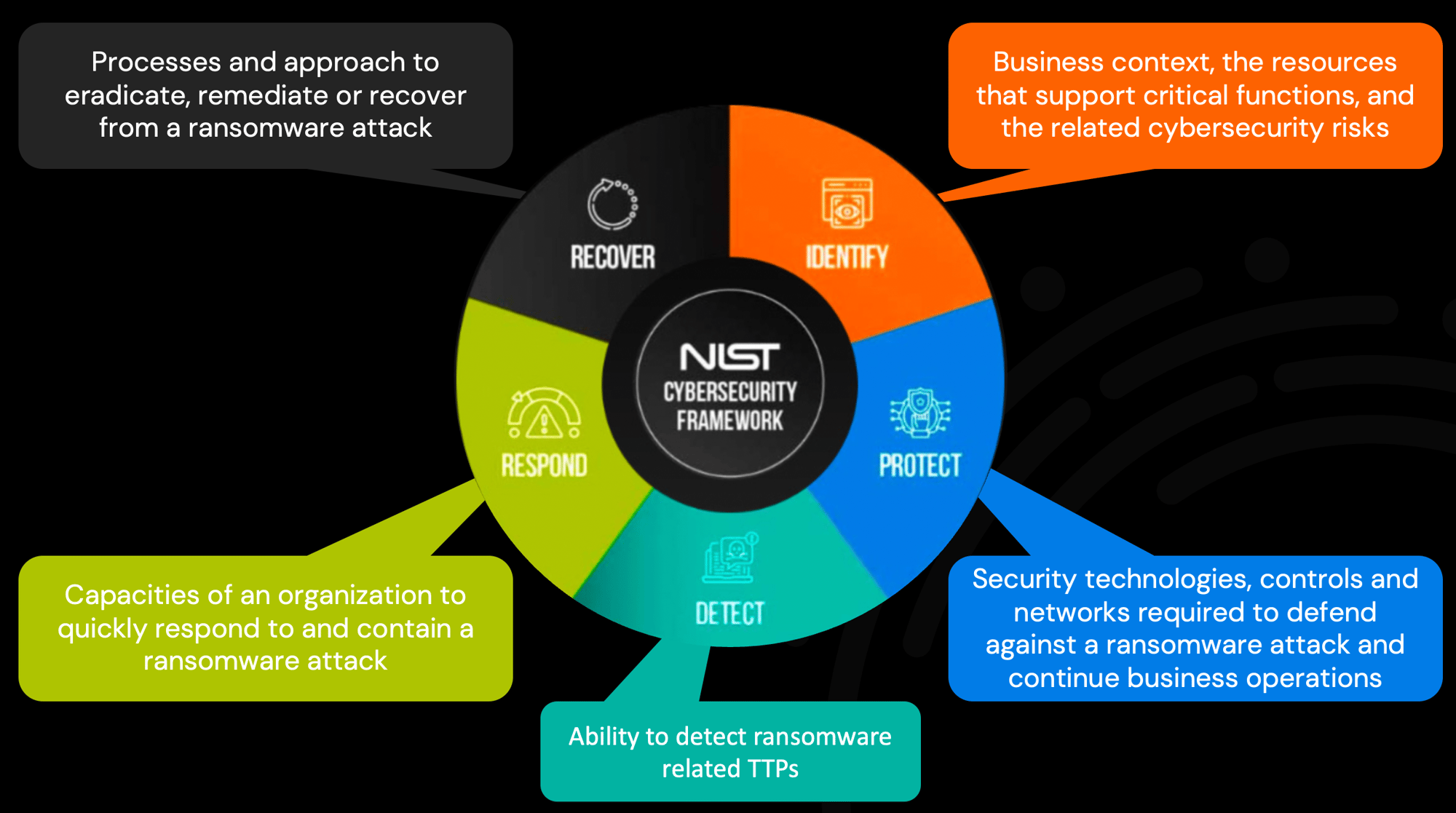ModernCyber's Ransomware Readiness Assessment is a service designed to evaluate your organization's ability to prevent, detect, and respond to ransomware attacks. It reviews your existing security controls, identifies potential vulnerabilities, and offers actionable recommendations to strengthen your defenses. This basic assessment gives you a clear insight into your current cybersecurity posture and outlines steps to enhance your overall protection against ransomware threats.
Overview
- Prepare your organization for ransomware threats
- Discover if your security controls can safeguard your data from ransomware
- Evaluation of your organization’s current people, processes, and technology, while simulating adversary tactics, techniques, and procedures (TTPs) in your environment.
- Comprehensive security strategy to prepare for a ransomware attack, prevent compromise of systems, protect and isolate critical data, and enhance enterprise response capabilitie
Top Outcomes & Benefits
- Maturity – Identify key weaknesses and strengths in ransomware defense capabilities and controls.
- Recover Faster – Improve Incident Response. Minimize downtime. Restore to most recent clean state with just a few clicks.
- Operational Efficiency - Recognize deficiencies in the management of ransomware tasks
- Strategy – Prioritized highly actionable recommendations to further strengthen your readiness and guidance to mitigate future ransomware attack
Base Tier Methodology

Premier Tier Methodology

Focus Areas

Table Top Exercise
- Working through mock scenarios to identify gaps and test your people, processes, and technology
- Validate that ransomware response procedures will work
- Verify processes into Playbooks
- Conducted in a highly engaging and interactive format, our Ransomware Tabletop Exercises ensure maximum participation and highly relevant output, and constructive discussions
- Confirm communication processes upon learning of the attack
- Verify that essential systems, applications, files, databases and other resources are protected
- Deliverable: Objective analysis of the exercise and provide a formal document which includes response plan gaps and shortfalls
Ransomware Incident Simulation
- Simulate lateral movement using common Ransomware techniques
- Simulation starts from one or multiple machines
- Test segmentation between networks to determine if ransomware can spread to other environments, such as:
- Manufacturing and plant (OT) networks
- Backup infrastructure networks
- Retail networks
- Other secure networks
- Test for accessible file shares which could be accessed by ransomware
- Simulate ransomware encryption behavior by using a custom, non-destructive ransomware emulation tool to mimic file encryption
- Review organization’s response capabilities
- Emulates real Tactics, Techniques, & Procedures (TTP)
- Mapped to MITRE ATT&CKTM
- Supports all types of networks and workloads: containers, public and private clouds
Examples of Areas Evaluated
- Backup process assessment including backup of data on systems (desktop and laptops), servers, and critical configuration files
- Business Continuity – BCP testing and evidence of testing
- Disaster recovery planning and proof of a working DR plan
- Malware and Ransomware detection and quarantine capabilities review
- Network and firewall assessment, including traffic monitoring
- Event monitoring – server and endpoint
- Endpoint security and encryption assessment, including response solutions
- User training on ransomware
- Incident response processes, tools, and plan review
Ransomware Incident Simulation
- Working through mock scenarios to identify gaps and test your people, processes, and technology
- Validate that ransomware response procedures will work
- Verify processes into Playbooks
- Conducted in a highly engaging and interactive format, our Ransomware Tabletop Exercises ensure maximum participation and highly relevant output, and constructive discussions
- Confirm communication processes upon learning of the attack
- Verify that essential systems, applications, files, databases and other resources are protected
- Deliverable: Objective analysis of the exercise and provide a formal document which includes response plan gaps and shortfall
Table Top Exercise
- Simulate lateral movement using common Ransomware techniques
- Simulation starts from one or multiple machines
- Test segmentation between networks to determine if ransomware can spread to other environments, such as:
- Manufacturing and plant (OT) networks
- Backup infrastructure networks
- Retail networks
- Other secure networks
- Test for accessible file shares which could be accessed by ransomware
- Simulate ransomware encryption behavior by using a custom, non-destructive ransomware emulation tool to mimic file encryption
- Review organization’s response capabilities
- Emulates real Tactics, Techniques, & Procedures (TTP)
- Mapped to MITRE ATT&CKTM
- Supports all types of networks and workloads: containers, public and private cloud